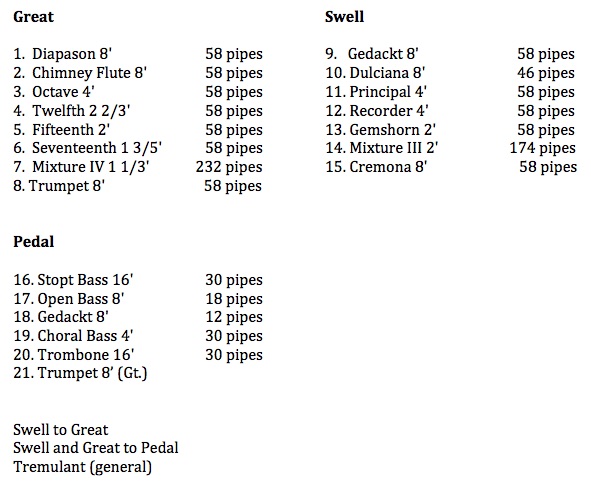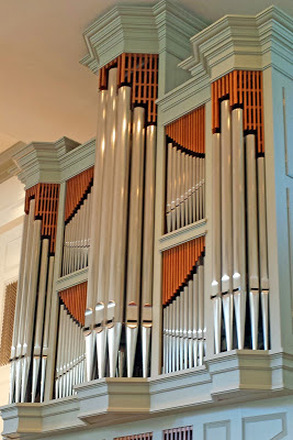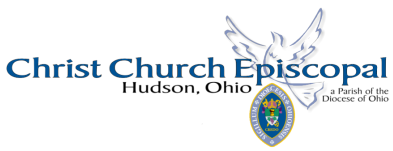Organ
Noack Opus 134, 1998
The History of the Noack Organ at Christ Church Episcopal
The process of selecting an organ builder began in the spring of 1990 as plans for the new church began to take shape. A committee of nine, chaired by Jean Martin, was appointed and began 18 months of study, including visits to a variety of organs and organ shops. Fritz Noack was unanimously selected to build our organ in June 1991. After funds were raised in 1996 the construction of the organ began.
The dedicatory recital of Noack Organ, Opus 134, was held on the Day of Pentecost (May 31st), 1998, with Daniel Hathaway, Organist and Master of Choirs at Trinity Cathedral, performing.
Note from the builders Noack Organ Company: We strove for an elegant, clear and reasonably transparent sound that supports congregational singing and a wide range of choral music, while allowing much of the idiomatic organ literature to be performed in a convincing, tasteful manner. This organ is not modeled after any specific historic one, but amalgamates a variety of historic American and European elements into the unique cohesive entity typical of our recent organs. It has mechanical key and stop action. The Great and Pedal divisions share common windchests in the upper part of the case, with the Stopt Bass pipes mounted in the center of the case in the most space‐efficient manner. The Swell is located in the lower part of the case with the shutters being barely visible behind the front screen.
The process of selecting an organ builder began in the spring of 1990 as plans for the new church began to take shape. A committee of nine, chaired by Jean Martin, was appointed and began 18 months of study, including visits to a variety of organs and organ shops. Fritz Noack was unanimously selected to build our organ in June 1991. After funds were raised in 1996 the construction of the organ began.
The dedicatory recital of Noack Organ, Opus 134, was held on the Day of Pentecost (May 31st), 1998, with Daniel Hathaway, Organist and Master of Choirs at Trinity Cathedral, performing.
Note from the builders Noack Organ Company: We strove for an elegant, clear and reasonably transparent sound that supports congregational singing and a wide range of choral music, while allowing much of the idiomatic organ literature to be performed in a convincing, tasteful manner. This organ is not modeled after any specific historic one, but amalgamates a variety of historic American and European elements into the unique cohesive entity typical of our recent organs. It has mechanical key and stop action. The Great and Pedal divisions share common windchests in the upper part of the case, with the Stopt Bass pipes mounted in the center of the case in the most space‐efficient manner. The Swell is located in the lower part of the case with the shutters being barely visible behind the front screen.




